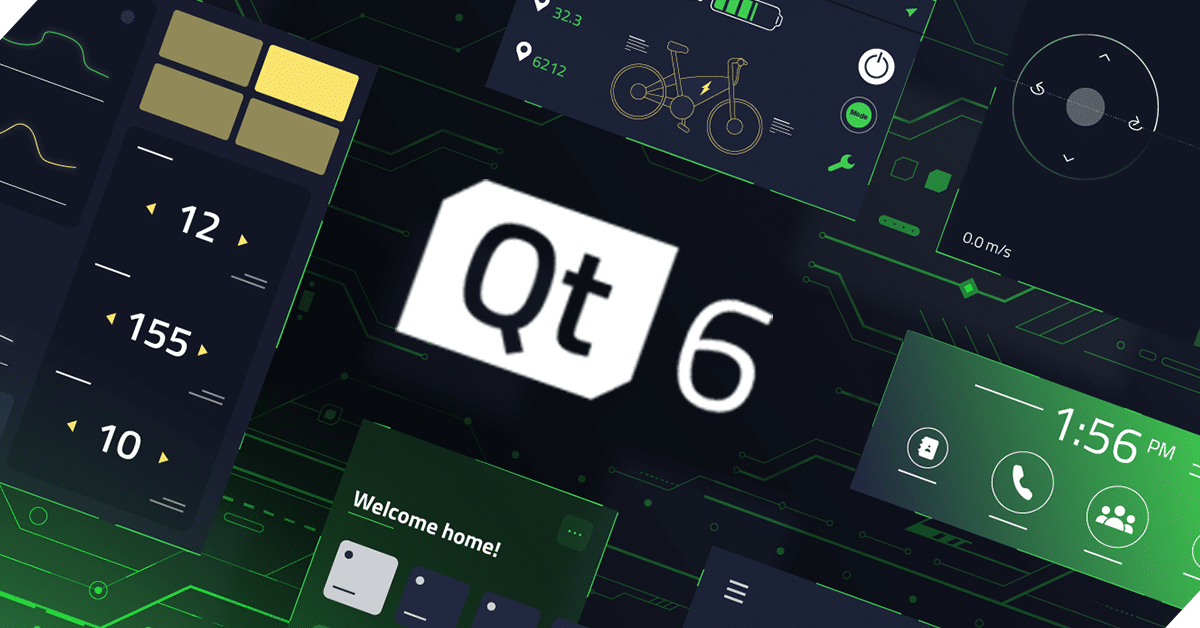
In the sixth release of the Qt 6 series, we introduced many new features for graphics and UI developers and the application backend.
The Qt Company unveiled few days ago the release of the new version of the framework "Qt 6.5" , in which work continues to stabilize and increase the functionality of the Qt 6 branch.
Qt 6.5 received the status of an LTS release, within which updates will be released for commercial license users within three years (for the rest, updates will be released six months before the formation of the next major version). Support for the previous LTS branch of Qt 6.2 will last until September 30, 2024. The Qt 5.15 branch will continue until May 2025.
Main new features of Qt 6.5
In this newly released version of QT 6.5, it is highlighted that the Qt Quick 3D Physics module, which provides an API to simulate physical processes that can be used with Qt Quick 3D for realistic interaction and movement of objects in 3D scenes, it has been stabilized and made fully compatible. The implementation is based on the PhysX engine.
Another change that stands out in the new version is that added dark mode support of Windows design, as well as a enabled automatic application of the dark layout enabled in the system and settings for frames and title if the application uses a style that does not change the palette. In an application, you can customize your own reaction to system theme changes by processing the QStyleHints::colorScheme property.
In Qt Quick Controls, the Material style for Android has been aligned with the recommendations of materials 3, Plus full styling has been implemented for iOS and APIs have been added to change the appearance (for example, containerStyle for TextField or TextArea, or roundedScale for buttons and popups).
For Wayland, added QNativeInterface::QWaylandApplication API to directly access the native Wayland objects that are used in internal Qt functions, as well as to access information about recent user actions, which may need to be passed to Wayland protocol extensions. The new API is implemented in the QNativeInterface namespace, which also provides calls to access the native APIs of the X11 and Android platforms.
In addition to this, it is also highlighted that added support for Android 12 platform and, despite the significant changes in this branch, the ability to create universal assemblies for Android was maintained, which can work on devices with different versions of Android, starting with Android 8.
Boot2Qt stack has been updated, which can be used to create bootable mobile systems with an environment based on Qt and QML. The system environment in Boot2Qt has been updated to the Yocto 4.1 (Langdale) platform.
Packages for Debian 11 have started and are commercially supported.
All the WebAssembly platform capabilities have been extended, allowing you to create Qt applications that run in a web browser and are portable between different hardware platforms. Applications built for the WebAssembly platform, thanks to JIT compilation, run with performance close to native code, can use Qt Quick, Qt Quick 3D, and the visualization tools available in Qt. The new version adds support for video rendering and the use of disabled tools in widgets.
the web engine Qt WebEngine was upgraded to the Chromium 110 code base, In addition to Linux, support for hardware-accelerated video rendering is implemented when using the Vulkan graphics API in X11 and Wayland-based environments.
Of the other changes that stand out:
- Added an experimental Qt GRPC module with support for gRPC protocols and Protocol Buffer, which allows you to access gRPC services and serialize Qt classes using Protobuf.
- On macOS, applications that use QMessageBox or QErrorMessage are guaranteed to display native platform dialogs.
- Added support for configuring HTTP 1 connections in the Qt Network module.
Added experimental CAN bus classes to the Qt Serial Bus module, which can be used to encode and decode CAN messages, process frames, and parse DBC files. - The TableView QML type implements interactive functions, such as editing cells in place, resizing rows and columns, and selecting multiple cells.
- Added support for stereoscopic rendering to the QOpenGLWidget class provided in the Qt Widgets module.
- A lot of work has been done to improve stability, around 3500 bug reports have been closed.
If you want to know more about it, you can check the details In the following link.
Download and get Qt 6.5
Those interested in the new branch of Qt 6.5 should know that support is provided for Windows, macOS, Linux platforms, iOS 14+, Android 8+ (API 23+), webOS, WebAssembly, INTEGRITY and QNX. The source code of Qt components is provided under the LGPLv3 and GPLv2 licences.
The new version can be obtained at the following link.